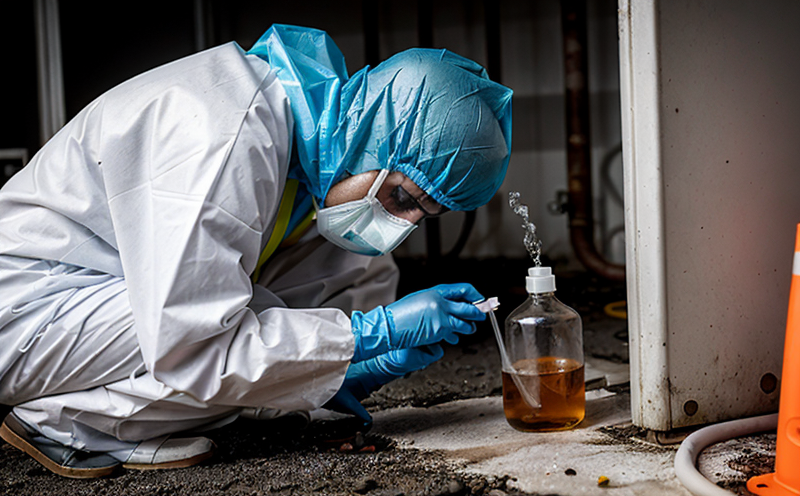ASTM E415 Optical Emission Spectroscopy for Carbon and Low-Alloy Steel
The ASTM E415 standard specifies a method using optical emission spectroscopy (OES) to determine the chemical composition of carbon and low-alloy steels. This non-destructive testing technique is widely used in quality assurance, compliance verification, and research and development for materials science.
During an OES test, samples are heated to a high temperature until they emit light at specific wavelengths corresponding to various elements present within the material. By analyzing this emitted light with a spectrometer, precise concentrations of key metallic elements like carbon (C), manganese (Mn), silicon (Si), phosphorus (P), sulfur (S), and others can be determined.
The accuracy and precision of ASTM E415 OES tests are paramount for ensuring product conformity to specification requirements. This method is particularly valuable in sectors such as automotive, aerospace, construction, and manufacturing where material integrity directly impacts safety and performance.
Preparation of samples involves cutting or grinding the steel specimens to ensure a flat surface suitable for accurate analysis by the spectrometer. The specimen must also be free from external contaminants that could interfere with the spectroscopic readings. Once prepared, the sample is placed into the OES instrument where it undergoes excitation through an electric arc or other heating means.
The resulting spectrum provides a detailed breakdown of elemental concentrations which can then be compared against specified standards or target values set forth by industry regulations and client expectations.
ASTM E415 OES tests are highly reliable for carbon and low-alloy steels because they offer rapid, repeatable results. However, it's important to note that this technique has limitations when dealing with very small amounts of certain elements or alloys containing high concentrations of chromium (Cr) or nickel (Ni).
The ASTM E415 standard is internationally recognized and widely adopted for its robustness in providing accurate chemical analysis. It supports compliance with various international standards including ISO, EN, ASME, and others.
Why It Matters
The importance of ASTM E415 Optical Emission Spectroscopy cannot be overstated in the context of carbon and low-alloy steel testing. Proper chemical composition control ensures that materials meet all necessary performance criteria, which is crucial for safety, longevity, and reliability across diverse industries.
For instance, in the automotive sector, accurate knowledge about the chemical makeup allows manufacturers to select or produce parts capable of withstanding high stress environments without compromising strength. Similarly, in construction applications, precise control over alloy content helps prevent structural failures due to corrosion or fatigue.
In R&D settings, ASTM E415 provides valuable insights into how different element concentrations affect mechanical properties like tensile strength and ductility. This information can guide the development of new alloys tailored specifically for advanced technologies or extreme conditions.
From a regulatory perspective, adherence to ASTM E415 ensures that products comply with relevant safety codes and environmental standards set by governing bodies worldwide. Non-compliance could lead to recalls, legal action, and reputational damage.
International Acceptance and Recognition
- ASTM E415 is recognized globally as a standard for chemical analysis of carbon and low-alloy steels. It is widely used by manufacturers, suppliers, and regulators in countries such as the United States, Europe, Asia-Pacific region, and beyond.
- The method’s precision and reliability have earned it acceptance among international standards organizations like ISO (International Organization for Standardization) and EN (European Norms).
- Aerospace industry associations also recommend ASTM E415 for its role in ensuring high-quality materials used in aircraft manufacturing.
- Automotive manufacturers incorporate ASTM E415 into their quality control processes to maintain consistent product performance across global markets.
Use Cases and Application Examples
In the automotive industry, ASTM E415 is used during vehicle development stages to evaluate prototype materials before mass production. It helps identify potential issues early on so that adjustments can be made without affecting final product quality.
Aerospace companies utilize this testing technique for certifying parts destined for space exploration missions or commercial flights. Ensuring proper chemical composition of components like engine casings and structural frames is critical to preventing catastrophic failure during launch or flight.
Construction firms apply ASTM E415 in quality assurance programs aimed at guaranteeing building materials meet stringent durability requirements. This includes verifying steel reinforcement rods used in concrete structures for resistance against earthquakes or windstorms.
R&D teams in various sectors employ ASTM E415 to explore new alloy formulations that could enhance existing products or create entirely novel solutions. For example, researchers might study how varying levels of chromium and molybdenum affect wear resistance in cutting tools or the flexibility of pipe materials.





